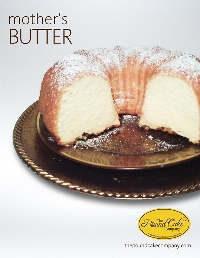
Listing what goes into pound cake is a dessert lovers idea of heaven
Mastering a good pound cake recipe or securing a trusted bakery as a source of a ready-baked pound cake is a must for any dessert lover’s repertoire.
Deceptively simple, there are few caveats to creating this classic dessert, and it is surprisingly versatile. This cake stores well, it is an instant crowd pleaser, and once you’ve got it down, the possibilities for new pound cake based desserts are endless.
This sweet, luscious cake first hit the food scene in the early 1700s, where it was passed from person to person with the basic 1:1:1:1 rule: 1 lb flour, 1 lb butter, 1 lb eggs, and 1 lb sugar. This made it easy for people who could not read or write (a common thing in that time) to remember the recipe. Of course, over the years the recipes have changed, giving rise to countless variations.
You may have noticed that the original recipe does not require any form of leavening; only the air incorporated into the batter upon mixing. This method results in a very dense, smooth cake, perfect for eating alone or sponging up juicy fruit compotes and liqueurs.
~
In modern times, bakers commonly downsize their recipes to make smaller cakes, while still staying true to the 1:1 ratio. The French method is to first decide how many eggs you are going to use, and then measure out the rest of the ingredients based on those proportions. Other variations include the introduction of leaveners, such as baking soda, to make the cake lighter. Then too, some bakers decide to play around with the oils/fats in the mix by replacing part of the butter with sour cream, for example, or cream cheese. These methods will change the texture of your masterpiece, however, so be sure to read through the recipe carefully before starting. Then you will have an idea of what to expect in the final product.
The point of mixing your ingredients is one of fair importance when it comes this heavy delicacy. Many preparations will instruct you to make sure all of your ingredients are at the same temperature before letting them in come in contact. This is to ensure the eggs and fat emulsify properly, which will in turn render a cake which rises to the appropriate height (all those air bubbles…). But, once the wet (eggs and butter or other fats) are properly beaten, it is equally important not to over mix the batter after the flour is introduced. Take heed, all of these instructions and warnings are there to keep your cake from falling and turning into a very sweet hockey puck or edible door stop.
Once you have conquered the basics of pound cake making, it’s time to get creative. The first most obvious addition is vanilla?and think good vanilla here, like a teaspoon or so of some fancy Madagascar bourbon vanilla, or even some crushed whole vanilla beans. But don’t stop there. Some tried and true additions include dried fruit and nuts introduced into the batter. You might also get really adventurous and throw in a few delicate herbs or citrus zest to infuse the cake with subtle flavors. (Try lavender. It’s to die for.)
And don’t forget the pound cake’s ability to soak up sweet liquids without getting soggy. The origins of holiday rum cake came from the Caribbean tradition of sousing our favorite dessert with rum. Our hero also pairs well with a drizzle of macerated fruits like sweet cherries or heavenly poached peaches. And let’s not leave out everyone’s favorite indulgence: chocolate. A drizzle or a positive downpour of the stuff, you can’t go wrong with a topping of chocolate and freshly whipped cream.
References:
The Food Timeline: Pound Cake
Martha Stewart: Perfect Pound Cake

